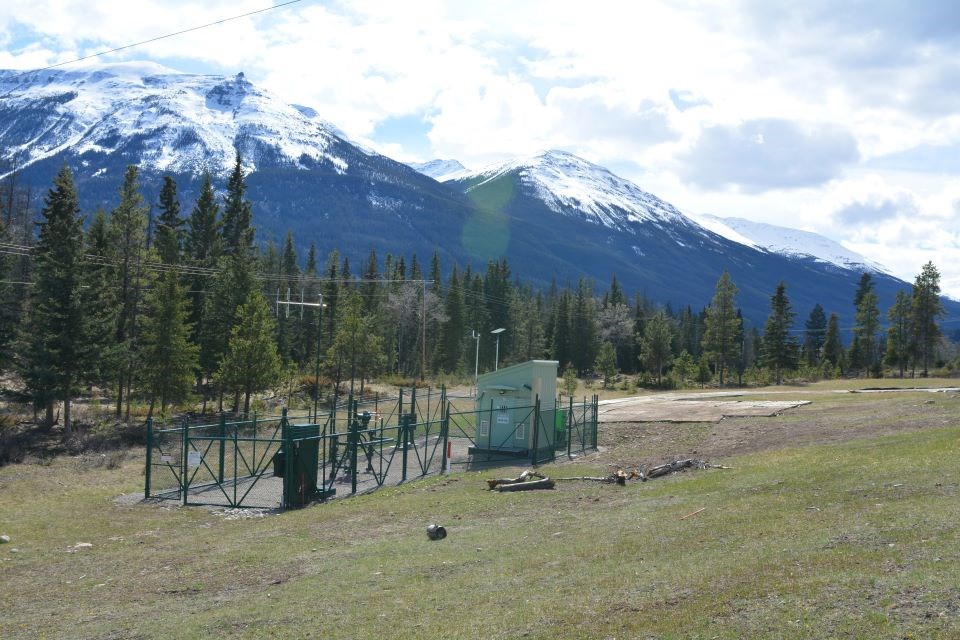After much effort and many years, May 1 was the commercial commencement date of the Trans Mountain pipeline expansion.
This was only a few weeks after the final weld occurred on April 11.
For a project that started more than a decade ago and had to overcome so many interminable obstacles along its snail’s path, everything now seems to be moving like a rabbit in springtime.
“It's been a long time coming. This project started in 2010, and it's great pride that brings us to this moment,” said Mike Davies, chief operating officer with Trans Mountain.
In 2013 the company submitted its original application for the Trans Mountain Expansion Project to the National Energy Board, which then approved it, subject to 157 conditions, three years later. Those conditions were met and, when shovels first went into soil the following year, it was estimated to cost just $6.8 billion.
Delays and budget overruns caused the total cost to balloon approximately 500 per cent up to $34 billion. When project originator Kinder Morgan was stymied with ongoing Indigenous and environmental opposition, it threatened to shut down the process.
Instead, the federal government purchased the pipeline for $4.5 billion in 2018 to make sure that the job got done. Logistics and marine timing mean that the first transport ship isn’t expected to receive its first load of oil to export until mid-May. Oil is already flowing: it takes a week to get to the end point.
The pipeline’s shipping capacity has swelled from 300,000 to 890,000 barrels per day.
“One of the things I think is really important for people to understand is the importance of the project of the economic benefits that it brings,” Davies said.
“This pipeline has been built without compromise. Yes, it’s cost a bit more and it's taken longer, but it has now met every expectation of Canadians as reflected in the regulatory requirements that are necessary to build a project like this.”
He called it a piece of “nation-building infrastructure” that transforms Trans Mountain from being a pipeline that serves a regional market as the largest single source of potentially motor fuel for the Pacific Northwest to a major supplier of Canadian oil to the Pacific Rim and providing access to the western Canadian sedimentary basin to Americans.
It will create a shift in the markets that will likely be felt within the first 18 months, he claimed.
The pipeline runs from its starting point in Edmonton’s Refinery Row to the Westridge Marine Terminal in Burnaby, B.C. The expansion project involved nearly 1,000 kilometres of new buried pipeline that will transport crude oil and refined petroleum products to other refineries and terminals in B.C. and Washington. Crude oil will also be shipped to offshore markets in Asia and the U.S. west coast.
This pipe is the reactivation of the twin of the first one that was installed in 1953. The Anchor Loop twin, 193 kilometres in length between Hinton and Hargreaves, B.C., was completed in 2008.
Now that the expansion project is done, the reactivation is complete.
Davies spoke about how complicated it is to build linear infrastructure while being mindful of the environment and the people that inhabit the land. He said that $6 billion was awarded to Indigenous companies. The project, he continued, was the largest archaeology program in Canadian history as workers identified 360,000 archaeological sites with 250,000 artifacts that have been recovered. They monitored 27,000 birds’ nests and relocated 1.5 million amphibians.
“The level of environmental protection and care that's gone into this – the quality, the construction, the feats of engineering that have been achieved to create this legacy piece of infrastructure – we’re very proud of it. It's the shortest and most efficient route to tidewater, but it's also the only sovereign route within Canada for Canada's wealth of resources to get to market.”
The first Trans Mountain pipeline experienced a number of oil spills including six through Jasper National Park alone. One of those was reportedly the second largest spill in the pipeline’s entire history.
The company has aimed to make this new pipeline as sturdy and durable as it could be to avoid any future spills. Everything starts with the design of the system and with the routing to be wary of geohazards, Davies said. The pipe itself is made to hold fast against the ground and the other elements it is surrounded by. The pipeline only exists to transport oil so everything from the metallurgy to the manufacturing to the inspection only has that goal in mind.
“The pipe is specified based on the requirements that it would foresee,” Davies said.
“But in many places, we have added extra wall thickness, essentially extra strength, over and above what would otherwise be required.”
Hydrostatic testing was also done to doublecheck the welds would hold to a pressure greater than the pipeline would see during normal service. In Jasper National Park, that hydrostatic testing was conducted between August and October 2022. It was monitored by Parks Canada environmental surveillance officers.
Within these next two years, the company will also run further testing to identify any potential defects that might have made it through. Cathodic protection sends a low electrical current along the surface to prevent corrosion of the external metal layer.
Above ground, the right of way is cleared of growth and Trans Mountain has a line patrol that flies regularly to maintain air coverage.



